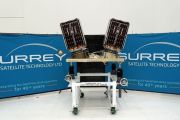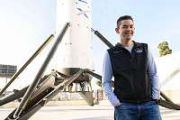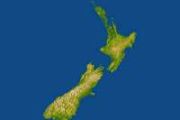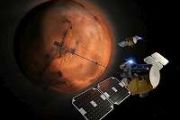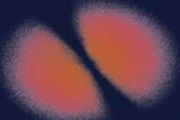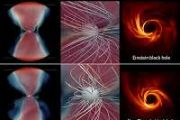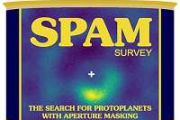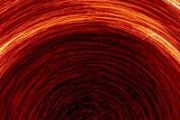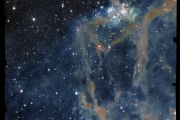
Copernical Team
Algae could be instrumental in making human exploration of Mars possible

While the world is marveling over the first images and data now coming from NASA's Perseverance rover mission seeking signs of ancient microscopic life on Mars, a team of UNLV scientists is already hard at work on the next step: What if we could one day send humans to the Red Planet?
There's a lot to consider when sending people, though.
Zoom into Webb’s view of the Pillars of Creation
 Video:
00:01:00
Video:
00:01:00
The Pillars of Creation are set off in a kaleidoscope of colour in the NASA/ESA/CSA James Webb Space Telescope’s near-infrared-light view. The pillars look like arches and spires rising out of a desert landscape, but are filled with semi-transparent gas and dust, and ever changing. This is a region where young stars are forming – or have barely burst from their dusty cocoons as they continue to form.
Protostars are the scene-stealers in this Near-Infrared Camera (NIRCam) image. These are the bright red orbs that sometimes appear with eight diffraction spikes. When knots with sufficient mass form
Treemetrics signs 1.2M euro contract with ESA
 Treemetrics, a global leader in forestry management software, has signed a contract with the European Space Agency (ESA) valued at euro 1.2 million. Under the two-year contract, Treemetrics will be utilising satellite imaging, data analytics and its advanced forest measurement technology to provide more accurate forest carbon credit estimates.
The global demand for forest carbon credits i
Treemetrics, a global leader in forestry management software, has signed a contract with the European Space Agency (ESA) valued at euro 1.2 million. Under the two-year contract, Treemetrics will be utilising satellite imaging, data analytics and its advanced forest measurement technology to provide more accurate forest carbon credit estimates.
The global demand for forest carbon credits i Chinese satellite in-flight calibration research approved by World Meteorological Organization
 Recently, the World Meteorological Organization (WMO) reported in its GSICS Quarterly Newsletter (Volume 16, No. 2, 2022) the research of the in-flight radiometric calibration of Chinese wide field of view (FOV) Directional Polarimetric Camera (DPC) on-board GF5 and GF5-02 series satellites based on Rayleigh scattering method, which was carried out by a research team led by Prof. LI Zhengqiang f
Recently, the World Meteorological Organization (WMO) reported in its GSICS Quarterly Newsletter (Volume 16, No. 2, 2022) the research of the in-flight radiometric calibration of Chinese wide field of view (FOV) Directional Polarimetric Camera (DPC) on-board GF5 and GF5-02 series satellites based on Rayleigh scattering method, which was carried out by a research team led by Prof. LI Zhengqiang f Viewing Earth from space at night: tracking our changing black marble
 When the sun goes down and lights go on - or not - a multitude of data can be gathered by satellite from the night sky, giving insights into the dynamic human activities happening at the surface.
With remote sensing, things like land use changes, urban development, and forest management can be reliably and accurately measured by daylight. At nighttime, we can gather different kinds of data
When the sun goes down and lights go on - or not - a multitude of data can be gathered by satellite from the night sky, giving insights into the dynamic human activities happening at the surface.
With remote sensing, things like land use changes, urban development, and forest management can be reliably and accurately measured by daylight. At nighttime, we can gather different kinds of data NASA dust detective delivers first maps from space for climate science
 NASA's Earth Surface Mineral Dust Source Investigation (EMIT) mission aboard the International Space Station has produced its first mineral maps, providing detailed images that show the composition of the surface in regions of northwest Nevada and Libya in the Sahara Desert.
Windy desert areas such as these are the sources of fine dust particles that, when lifted by wind into the atmospher
NASA's Earth Surface Mineral Dust Source Investigation (EMIT) mission aboard the International Space Station has produced its first mineral maps, providing detailed images that show the composition of the surface in regions of northwest Nevada and Libya in the Sahara Desert.
Windy desert areas such as these are the sources of fine dust particles that, when lifted by wind into the atmospher Orion Space Solutions to develop EO processing system for NOAA
 The National Oceanic and Atmospheric Administration (NOAA) has awarded Orion Space Solutions a grant to build a dynamic, seamless one-stop platform to process, analyze, and visualize Earth observations using advanced artificial intelligence (AI) and digital technologies.
The resulting system will further human understanding of environmental change on Earth, considering both current and pas
The National Oceanic and Atmospheric Administration (NOAA) has awarded Orion Space Solutions a grant to build a dynamic, seamless one-stop platform to process, analyze, and visualize Earth observations using advanced artificial intelligence (AI) and digital technologies.
The resulting system will further human understanding of environmental change on Earth, considering both current and pas 2023 Suborbital researchers conference to spotlight burgeoning rocket, balloon opportunities
 As the pace of commercial and civil suborbital space missions on rockets and balloons continues to climb, so does the number and diversity of research and educational payloads and payload specialists flying on these missions. The 2023 Next-Generation Suborbital Researchers Conference (NSRC-2023) will convene February 27 to March 1 in Broomfield, Colorado, bringing together hundreds of suborbital
As the pace of commercial and civil suborbital space missions on rockets and balloons continues to climb, so does the number and diversity of research and educational payloads and payload specialists flying on these missions. The 2023 Next-Generation Suborbital Researchers Conference (NSRC-2023) will convene February 27 to March 1 in Broomfield, Colorado, bringing together hundreds of suborbital Europe's all-new weather satellite arrives at launch site
 After a two-week voyage across the Atlantic Ocean, the ship transporting the first Meteosat Third Generation satellite docked at Pariacabo in French Guiana and the precious cargo unloaded. Now safe and sound in one of the spaceport's cleanrooms, satellite engineers will ready it for liftoff on an Ariane 5 rocket in December. Once in geostationary orbit, this new satellite, which carries two new
After a two-week voyage across the Atlantic Ocean, the ship transporting the first Meteosat Third Generation satellite docked at Pariacabo in French Guiana and the precious cargo unloaded. Now safe and sound in one of the spaceport's cleanrooms, satellite engineers will ready it for liftoff on an Ariane 5 rocket in December. Once in geostationary orbit, this new satellite, which carries two new Beyond Gravity to supply power electronics for Loft Orbital's satellites
 Beyond Gravity, a leading space systems company, has been selected to supply equipment for Loft Orbital's Longbow spacecraft based on Airbus Arrow platform. The physical equipment is referred to as the Power Control and Distribution Unit (PCDU).
The PCDU provides mission critical power supply capabilities and in-orbit configurability for "The Hub" that carries all payloads of a Loft Orbita
Beyond Gravity, a leading space systems company, has been selected to supply equipment for Loft Orbital's Longbow spacecraft based on Airbus Arrow platform. The physical equipment is referred to as the Power Control and Distribution Unit (PCDU).
The PCDU provides mission critical power supply capabilities and in-orbit configurability for "The Hub" that carries all payloads of a Loft Orbita 







